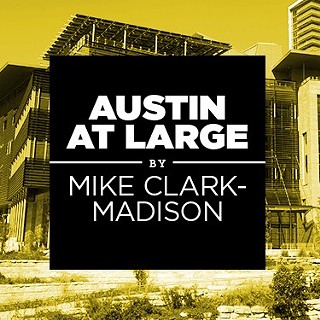Austin at Large: More Alike Than Different
Where to start a conversation about creating decent housing for all of Austin
By Mike Clark-Madison, Fri., July 9, 2021
Lots of great feedback, even from my haters, on last week's column; many of you are ready to talk about producing decent housing for everyone in Austin, 1 million and counting, where it needs to be. Let's do that! We need to make time for this. (I may have to duck out now and again to keep an eye on the Capitol and the police union.)
Here's a place to start: There are some verities about space and time and class and culture that we need to all get right and agree upon. For example, I caught some smoke from people who didn't like my suggestion that we preserve the precious bits of NIMBY Austin under glass and focus on the rest. Mostly these were arguments from perceived principle, or at least a desire to lay blame on affluent white people, which, sure. But that is all fighting the last war. The dreaded transition zones from the last Land Development Code Revision, which threw so many vocal central-city NIMBYs into existential crisis, made up less than 2% of the city. Completely bulldozing them over the pained shrieks of the anti-CodeNEXT crowd would not produce decent housing for everyone in Austin where it's needed. So why waste time on it? We could instead talk about quietly allowing every Austin property owner, all locations and all uses, no caveats or bullshit, to add (at least) one dwelling unit by right. The city could even provide preapproved plans as we have discussed for eons. That would be appreciated in all kinds of neighborhoods, including ones that want to be snow-globed; if it applies everywhere, it mitigates the relative risk.
Our Participation Trophies
Most issues that bear down on a community – public safety, health care, education, environmental protection, and so on – impact the lives of everyone, but we do not participate in them at the same time in the same ways; we are not all students, or patients, or survivors, or polluters, all at once. Housing is different! We do all participate in our built environment – land use, transportation, and housing, which are all tightly intertwined – every day in every way. Our similarities as human beings outweigh differences between stakeholder groups or market segments.
As we illustrate in our cover package this week, housing is a continuum we all live on. The bottom end, closest to homelessness, features more interventions than are needed at the other end, where lies the 100% privately financed, market-rate, owner-occupied, single-family housing that's centered in our folklore about the American dream. But they are not two different things. The forces and factors that influence all land use, transportation, and housing decisions wash over the entire continuum, sometimes like the tides, sometimes like tsunamis.
It would be nice if our dialogues were elevated by this understanding, but of course they aren't; people try to build walls and fences to separate themselves and segregate others from the gravitational pull of these universal needs, all of which eventually fall down. It's natural for people to see themselves as the median citizen whose particular needs are actually universal – the new housing going up on the corner isn't affordable if I can't afford it, I don't need a train to get to work so nobody else does either, et cetera. This turns up unconscious biases in most everyone. Since we live in a city, country, and society shaped by centuries of structural racism, those biases fall in predictable directions, no matter how enlightened one may be. Austin does offer an enabling climate for people to spin up towering outrage that they are not racist or NIMBY or part of the problem, and for mansplaining what we should really do to meet our housing and mobility needs that nobody else has thought of. (Gondolas!) Of course Elon Musk likes it here.
Prices Paid, Bills Come Due
The velocity of our growth produces enormous challenges but not inexplicable ones. I read a research paper this week that aims to estimate the "zoning taxes" – the amount that land use regulation adds to the price of (single-family) housing – in various American markets. Austin is not one; the authors do look at Dallas, and at peer cities such as Charlotte and Nashville, and conclude that in those places no such tax exists, and would likely say the same about us. Many places in and around Austin don't have tight land use regulations (in the unincorporated counties, there are barely any), and as sad as we get about "sprawlfordability," the external actors driving our growth don't think a commute from Lockhart is more than people can bear. But in the Los Angeles, San Francisco, and Seattle metros, the zoning tax on a single-family home at even their farthest edges – places that, in our terms, would be like commuting from Waco – exceed annual household incomes and make home ownership impossible. We are far from those conditions.
The regulations driving up the zoning tax aren't all just NIMBY bullshit (though some are!) but include quite vital provisions to keep people from dying in a number of ugly ways that are now becoming mundane. Sustainability is a thing, one that could cohere public buy-in for an assertive housing-forward redevelopment initiative to get rid of Austin's obsolete concrete corridors, like I mentioned last week. It creates a loss frame – protecting something that's at risk, much more powerful than the promise of a benefit – for targeted infill within our built footprint, rather than trying to make our greenfield projects greener and resilient to fire and flood. This also applies to more intense development in the suburbs, which I'll focus on next time.
Got something to say? The Chronicle welcomes opinion pieces on any topic from the community. Submit yours now at austinchronicle.com/opinion.









